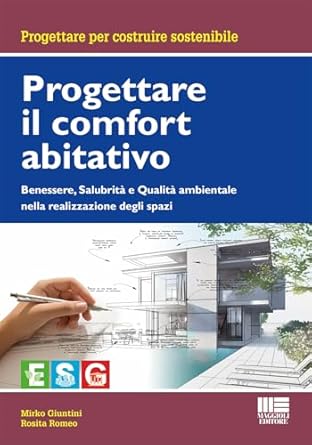Living comfort is the result of a dynamic balance between humans and the built environment, where air quality, thermo-hygrometric control, acoustics and lighting intertwine with the sensory and psychophysical responses of the individual. This volume proposes an interdisciplinary approach to the design of living spaces, connecting the principles of neuroscience with technical solutions to ensure indoor well-being. Through a comparative analysis of the functioning of the human body and the performance of the building envelope, the authors offer a guide to conscious design of environments, relating building systems, materials and construction technologies to the sensory perceptions of those who inhabit the spaces. The discussion is enriched by numerous examples of applications dedicated to residences, schools, hotels, workplaces and wineries, with a particular focus on health management, energy efficiency and environmental sustainability. An indispensable tool for architects, engineers and designers involved in defining spaces that improve the quality of daily life.
CURRICULAR EDUCATIONAL OFFER
OTHER EDUCATIONAL OPPORTUNITIES
PhD News
PhD Programmes
Focus on
Polimi AI
50 years at the forefront of AI research
Magazine
Frontiere
Journey into the world of research
SERVICES FOR STUDY
LIVING THE CAMPUS
OPPORTUNITIES
Apply to Polimi as
Exchange student (incoming)
Visit
Magazine
Frontiere
Journey into the research world

